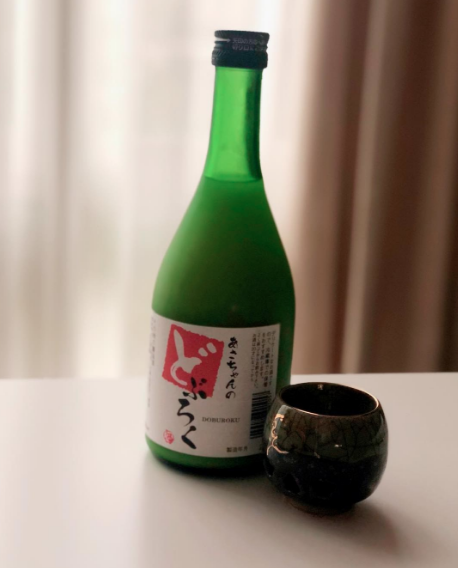
Sake review – Asachan’s doburoku
Brewer: Watanabe Shuzojo
Sake reviewed: Asachan’s doburoku
Whether you’re new to trying sake or you’re a seasoned veteran, you will find a unique experience enjoying Asachan’s doburoku brewed by Watanabe Shuzojo. Not only is this sake incredibly special in the way it looks, tastes and smells, however the brewery itself and it’s head brewer is also incredibly special!
Even if you have tried cloudy Nigori sake in the past, doburoku is different in the way it tastes and feels in your mouth, while also having a much more significant historical meaning.
The Brewery
Watanabe Shuzojo, located in Ogaki Gifu “the Capital of Water” near Nagoya, was founded in 1902. One of the reasons this brewery is so special is because they have a female brewer, which is a very rare find in Japan as sake making is a male dominated industry. Actually, in the past females were not even allowed to enter the sake production workshop, let alone make the sake. It’s only in recent years that female brewers were allowed, and in the Gifu prefecture, Asako is one of a kind.
Asako Watanabe has produced sake since 1998 and is the fourth generation of Watanabe in the sake brewing profession. She prides herself in using local rice and soft groundwater from the Ibi River in her sake.
Asachan Doburoku
The Asachan’s doburoku is a milky white sake that I believe will be very popular with the ladies! It has a thick, almost milky texture that will be loved by anyone who would typically enjoy a Kahlua drink on a cold day. It has a sweet floral aroma and a sweet/sour taste, similar to a lactic acid beverage, so if you enjoy yogurt drinks, you will most definitely enjoy Asachan’s Doburoku.
The Asachan’s doburoku is incredibly easy and tasty to drink. It has a dessert-like taste that goes down smoothly, with bits of rice that melt in your mouth. Unlike traditional sake where the rice grains are filtered out, some of the rice from the Asachan’s Doburoku is left in the drink, so it can be quite filling. Unlike traditional sake, the liquid obtained after the fermentation is wrung out in a cloth. Depending on the degree of wringing and filtering, there are soft rice particles that still float after fermentation. These rice particles are left in the sake for you to enjoy a truly delicious sake experience.
The name, “Asachan’s doburoku", is unique in itself, as it is a combination of the brewer’s first name, Asako and the word doburoku, the unfiltered white sake.
Asachan’s Doburoku is best served cold and I highly recommend pouring it by the glass so that you get equal parts sake and equal parts rice grain. Because it is a sweet beverage, you could pair it with dark chocolate and other semi-sweet treats, but I would also consider pairing it with something spicy, as the lactic acid taste will balance it out.
About Doburoku
Doburoko is a thick unfiltered sake that has been brewed by Japanese families for centuries. Doburoku is a sake that does not undergo filtering or pressing after fermentation. It is different from your average cloudy sake because cloudy sake normally has the rice grains filtered out. During the making of doburoku, the steamed rice, koji and water are added to the starter mash, known as moto. sweeter drink with a lower alcohol content. The fermentation process during brewing stops at a much earlier stage of brewing than traditional sake, producing a sweeter drink with a lower alcohol content.
While doburoku is the most traditional way of making sake, this way of brewing unfiltered sake was once outlawed. The government imposed a liquor taxation law and introduced a law stipulating that all true sake must be filtered, which means that Doburoku was labeled to be not truly a sake in legal terms. And because it wasn’t truly a sake, sake breweries without doburoku license couldn’t make them.
Watanabe Shuzojo is one of only a select few who have a legal license to produce their doburoku. And it might just be one of the yummiest drinks I have ever had the pleasure of drinking, so it is worth looking for!
Doburoku has a lower alcohol content than other sake, which makes it incredibly easy and enjoyable to drink, without getting too intoxicated or hot in the face.




